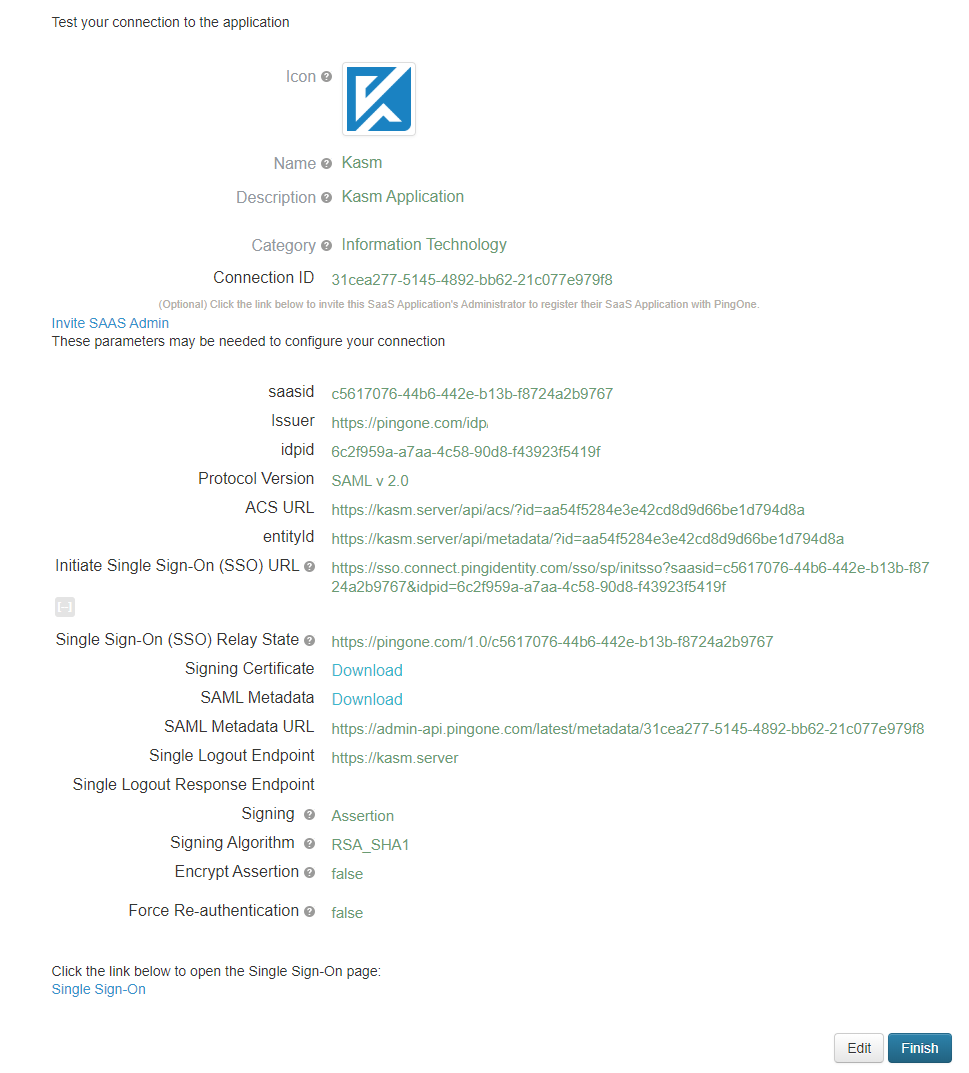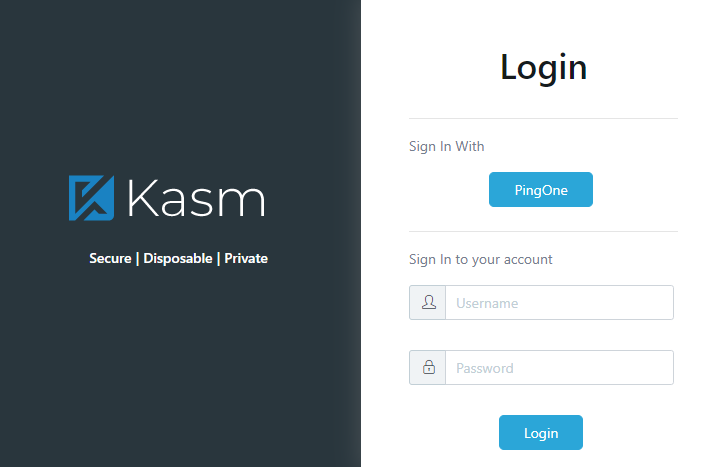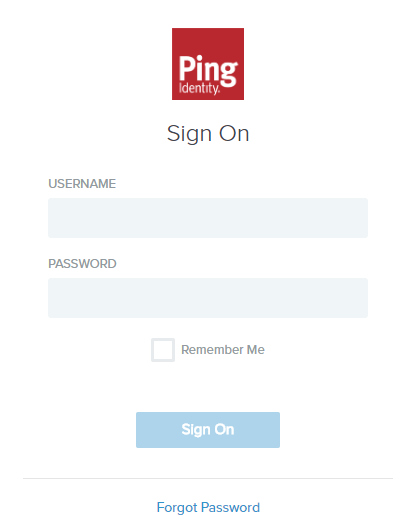PingOne SAML Setup¶
Create a new SAML configuration in Kasm¶
Log into the Kasm UI as an administrator.
Select Authentication -> SAML -> Create New Configuration
The SAML 2.0 Configuration page will auto-generate the Entity ID, Single Sign On Service, Single Logout Server, and Relay State values.
Check Enable and enter a Display Name. e.g (PingOne)
Enter memberOf in Group Member Attribute
Enter emailAddress in NameID Attribute
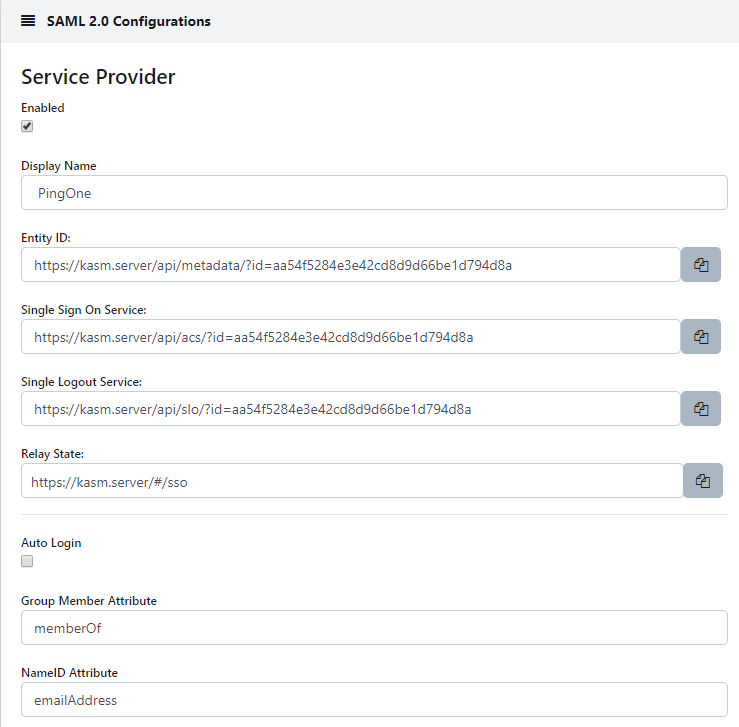
Kasm SAML Configurations¶
Leave this page open and continue to the next steps.
Create a new SAML Application in PingOne¶
In the PingOne Admin portal, click Applications -> My Applications -> Add Application -> New SAML Application
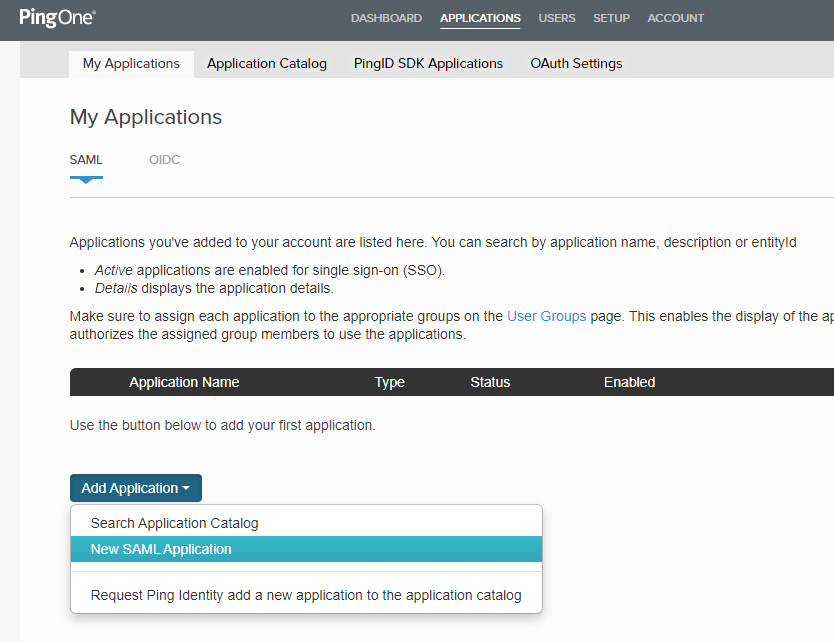
Add SAML Application¶
Give the application a Name, Description , Category and optionally an icon. Click Continue to Next Step
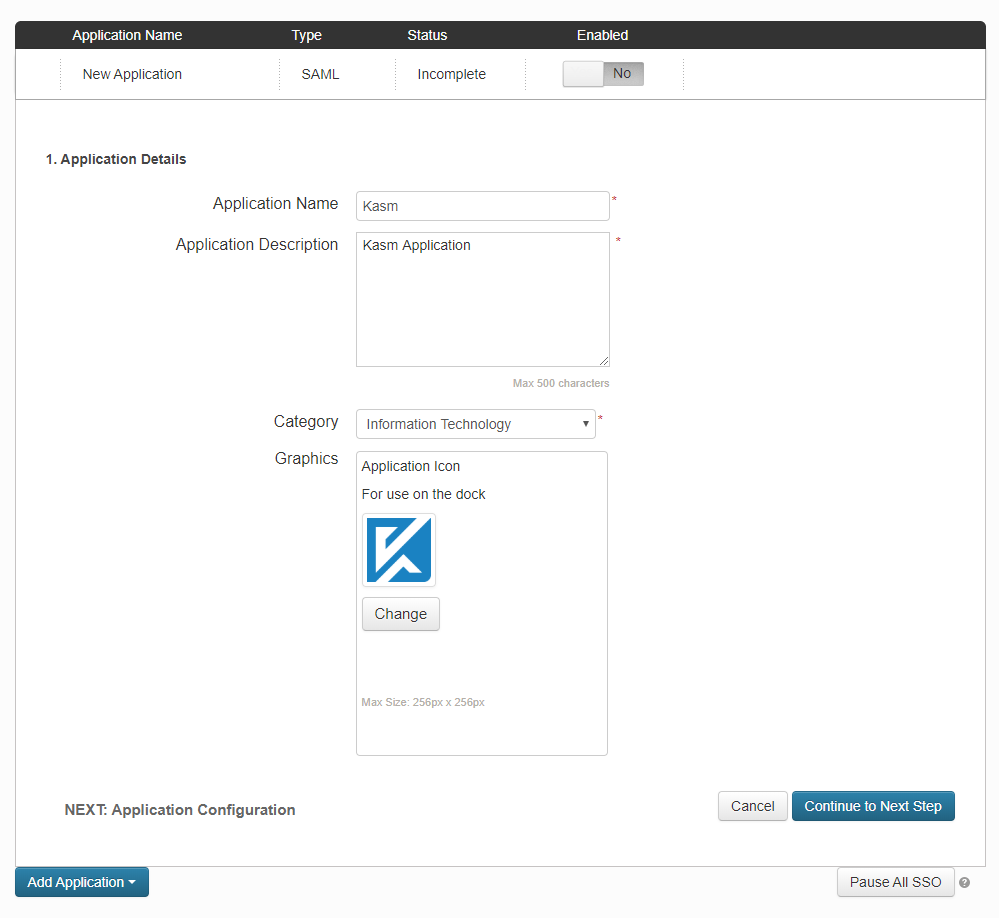
New SAML Application¶
Copy the Service Provider entries from the Kasm SAML Configurations started in the previous section into the Basic SAML configurations and click.
Kasm Property Name
PingOne Property Name
Entity ID
Entity ID
Single Sign On Service
Assertion Consumer Service (ACS)
Single Logout Service
<Server URL> (e.g https://kasm.server)
Relay State
Application URL
Select Redirect for Single Logout Binding Type
Select RSA_SHA1 for Signing Algorithm
Select Continue to Next Step
At the SSO Attribute Mapping page click Continue to Next Step
At the Group Access page enabled the groups desired. In this example we will add both the built in Domain Administrators@directory and Users@directory groups.
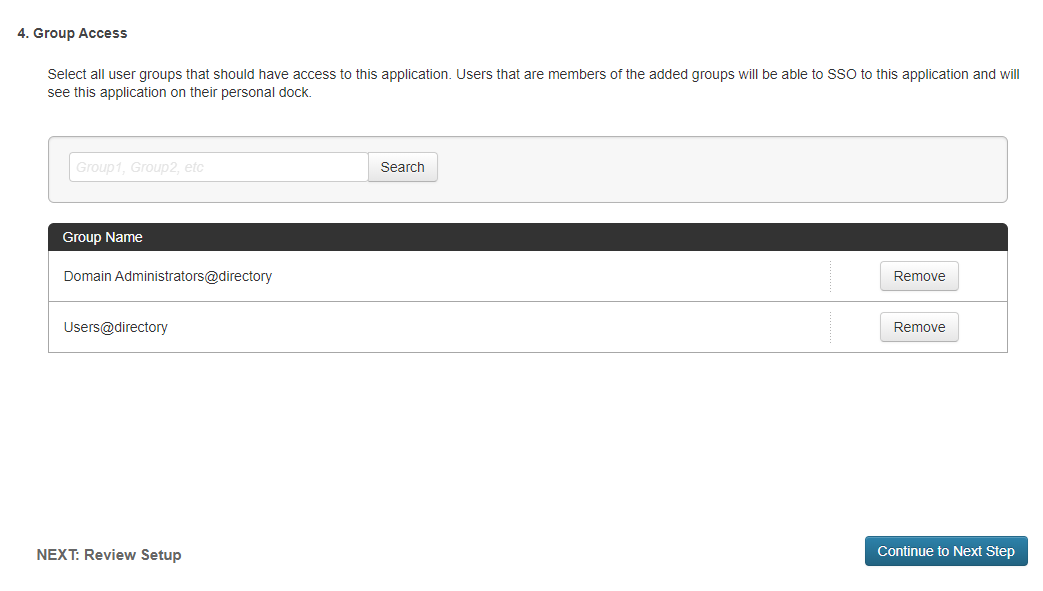
Group Access Selections¶
Select Continue to Next Step. The Review Setup page is shown.
Click Download next to Signing Certificate. Open this file with a text editor. This will be used as the Singing Certificate in the next section.
Click Download next to SAML Metadata. Open the file with a text editor.
Identify the Location for the md:SingleLogoutService Binding=”urn:oasis:names:tc:SAML:2.0:bindings:HTTP-Redirect property. This will be used as the Single Logout Service property in the next section.
Identify the Location for the md:SingleSignOnService Binding=”urn:oasis:names:tc:SAML:2.0:bindings:HTTP-Redirect property. This will be used as the Single Sign On Service property in the next section.

Group Access Selections¶
Complete SAML configuration in Kasm¶
Back in the Kasm UI SAML configuration page update the Identity Provider selections
Kasm Property Name
Azure Property Name
Entity ID
Issuer
Single Sign On Service
Single Sign On Service
Single Logout Service / SLO Endpoint
Single Logout Service
X509 Certificate
Signing Certificate
In the Advanced Settings of check Want Assertion Signed and click Submit
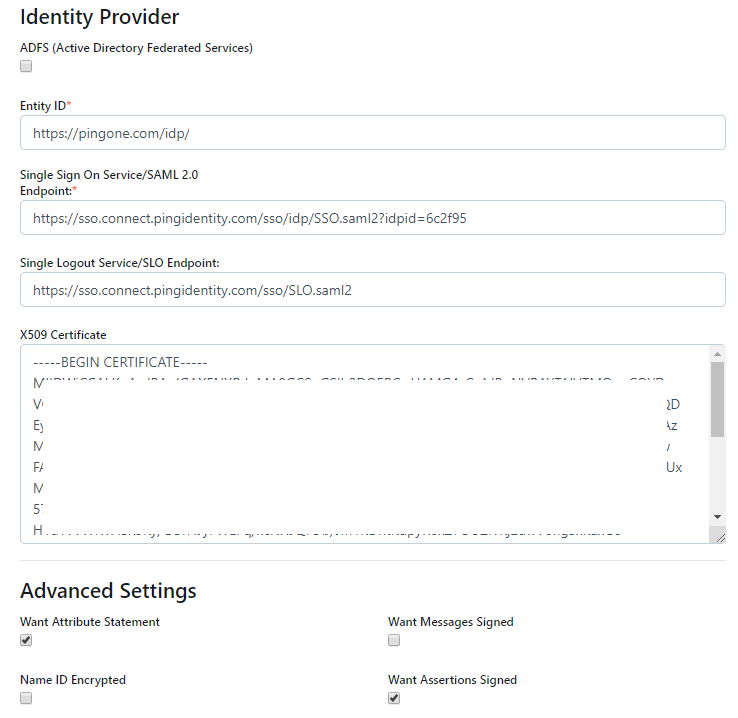
Group Access Selections¶
In the Advanced Settings of check Want Assertion Signed and click Submit
Mapping Users¶
PingOne is not set up to pass along the user’s group membership during the SAML assertion. These groups can be mapped to groups within the Kasm Application. In the previous step we gave application login permissions to both the Domain Administrators@directory and Users@directory groups in PingOne. The following steps will now map the PingOne Domain Administrators@directory group to the Administrators group in Kasm.
In the PingOne Admin portal, click Users -> User Groups
Inspect the Domain Administrators@directory group.
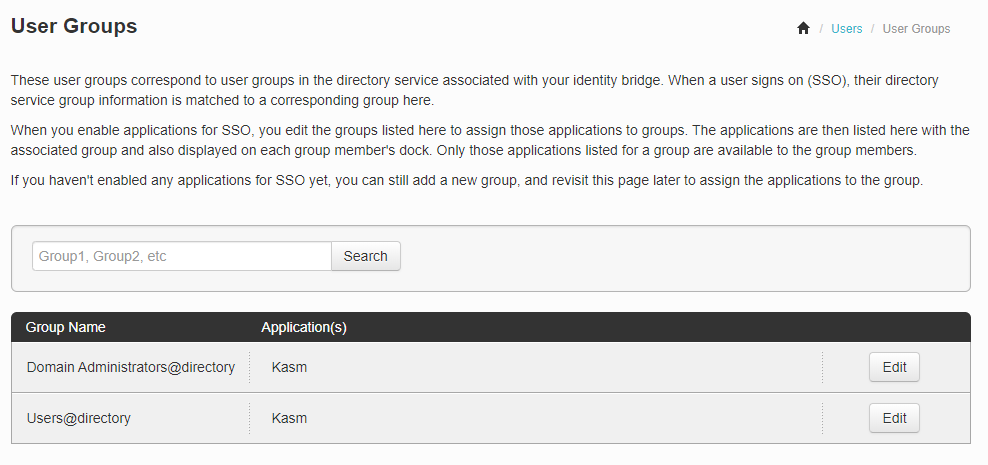
PingOne User Groups¶
Log into the Kasm UI as an administrator.
Select Groups, then click Edit next to the Administrators Group
Check SAML Group and enter the Object Id for the desired Azure AD Security group previously configured.
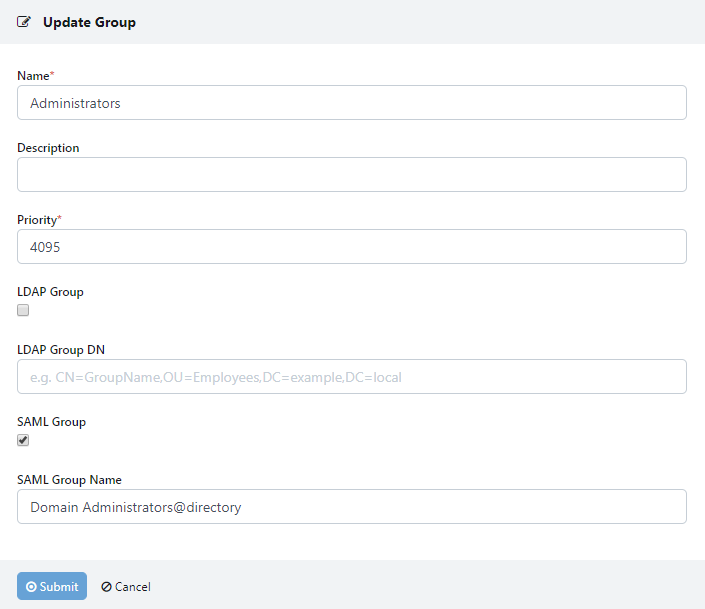
Update Kasm Group¶
